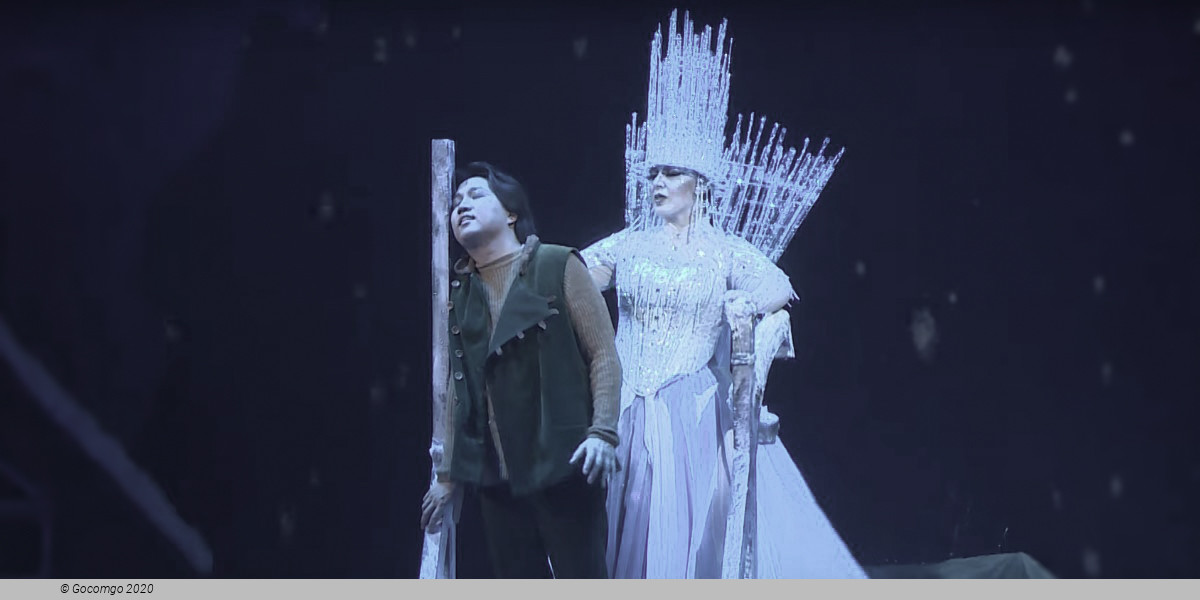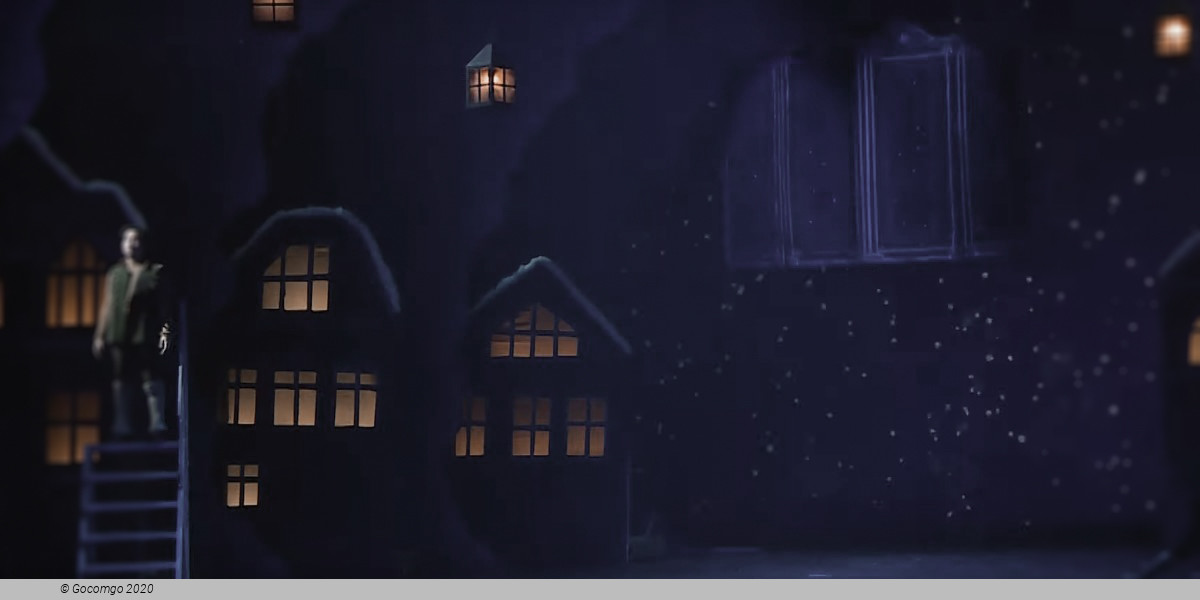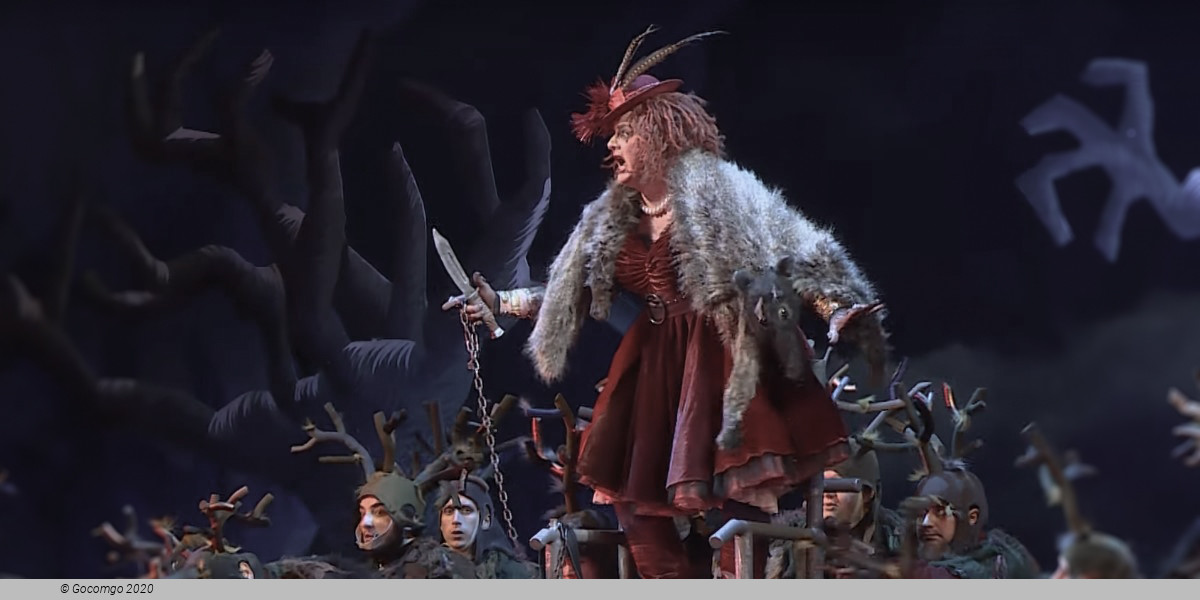Prologue
A rocky landscape.
The trolls are piecing together the shards of what they call the Mirror of Evil.
Act I
Introduction
The Lamplighter, our guide through this story, tells us that once upon a time an orphaned boy named Kai found a loving home in the good old town of Odense, where the Grandmother took care about him and little Gerda became his friend.
Scene 1.
Odense.
The townsfolk of Odense are looking forward for Spring to drive away winter’s chill and snow.
Kai and Gerda are carried away with their exciting game. The Grandmother is calling them home, but they don’t hear.
The trolls arrive. They can’t bear the merry mood of the townsfolk, and above all they hate Kai’s cheerful laughter. The trolls want to spoil the festivity, but the townsfolk drive them away. The trolls plot to revenge.
Scene 2.
Kai and Gerda’s house.
Kai is daydreaming over a book. He wishes he could travel to faraway lands, for the old house has grown too small for him.
Gerda sets up the fire in the fireplace and lights the room with candles. Kai swears to her that he will ever be faithful and will never leave her alone.
The Grandmother comes. Kai jokingly tells Gerda the story of the Snow Queen. Gerda laughs, but then notices a shadow outside the window. Someone has been prying on them!
Now Kai understands that he has terrified Gerda, and he starts a game of blind Tom to make it up to her. As they play, they take no notice of a troll approaching.
The troll pricks an icy pointer at Kai’s heart. Kai begins mocking Gerda and the Grandmother and sneering at them. Suddenly he sees frostwork turn into writings and hears the voice of the Snow Queen. She wants to take Kai with her, but Gerda refuses to let him go.
Intermezzo
The Lamplighter laments the human hearts in which Winter has settled.
The trolls talk over their trick and look forward to the coming of the Snow Queen.
Scene 3.
Odense town square.
A company of strolling performers entertains the townsfolk. Gerda is doing her best to make Kai smile, but he is disdainful and arrogant and insults the townsfolk and the Lamplighter.
The Snow Queen appears and summons Kai to her icy palace. Kai heeds her calling and follows her into the snow whirl.
Gerda sets out to find her beloved.
Act II
Scene 4.
A forest at dusk.
Gerda is making her way through the thicket.
Suddenly the forest gets into motion: the robbers have found the chill in the hollows of the tree trunks. The robbers are tired and hungry and not at all content with having ventured so far away.
The Old Robber-Woman returns with booty. The robbers give praises to her and to their trade.
Gerda falls into the robbers’ ambush. She possesses nothing that they can rob her of, so they intend to kill her, but the Old Robber-Woman orders to keep her captive until morning.
The Little Robber-Girl appears, the daughter of the Old Robber-Woman. Gerda’s story about Kai touches her heart and fills her with desire to help, but she does not know how.
The Little Robber-Girl’s captured Reindeer breaks in their conversation: he saw the Snow Queen taking Kai away and knows where to find him.
The Little Robber-Girl sets Gerda and the Reindeer free.
Gerda rides the Reindeer straight to Lapland.
Intermezzo
The Lamplighter contemplates about the saddest and the most wicked thing in the world, lovelessness.
Scene 5.
The Palace of the Snow Queen.
Captive children, whose hearts are frozen by the Snow Queen, are trying to compose the word Eternity with of pieces of ice.
Kai is among the children, and his efforts to compose the word are of no avail.
The Snow Queen arrives and finds that Kai’s heart is beginning to thaw. She freezes him again and leaves, and he carries on with his occupation.
Gerda arrives. She sings the song that she and Kai used to sing together, and Kai’s heart gets warm again. The flame of Kai and Gerda’s love brings the Snow Queen down.
Epilogue
Kai and Gerda hurry to Odense, where they are met by the townsfolk, the Little Robber-Girl and their dear old Grandmother. Everyone is impatient to welcome in the long-awaited spring.





 Teatralnaya Square 1
Teatralnaya Square 1